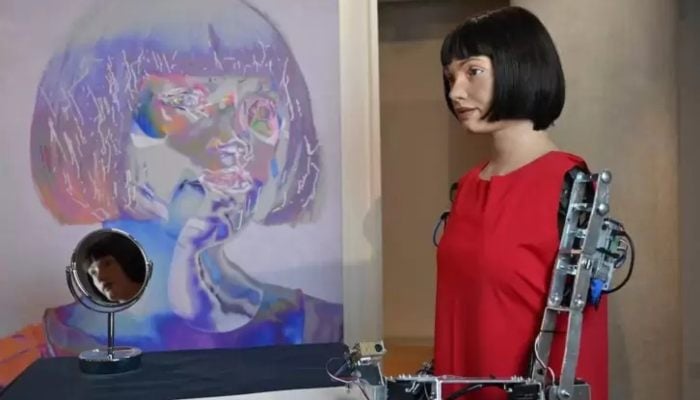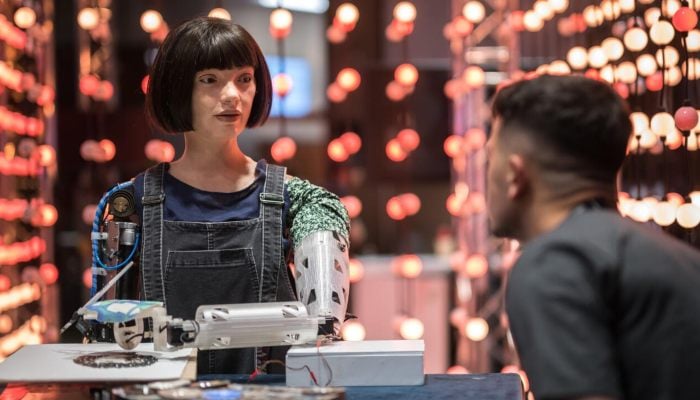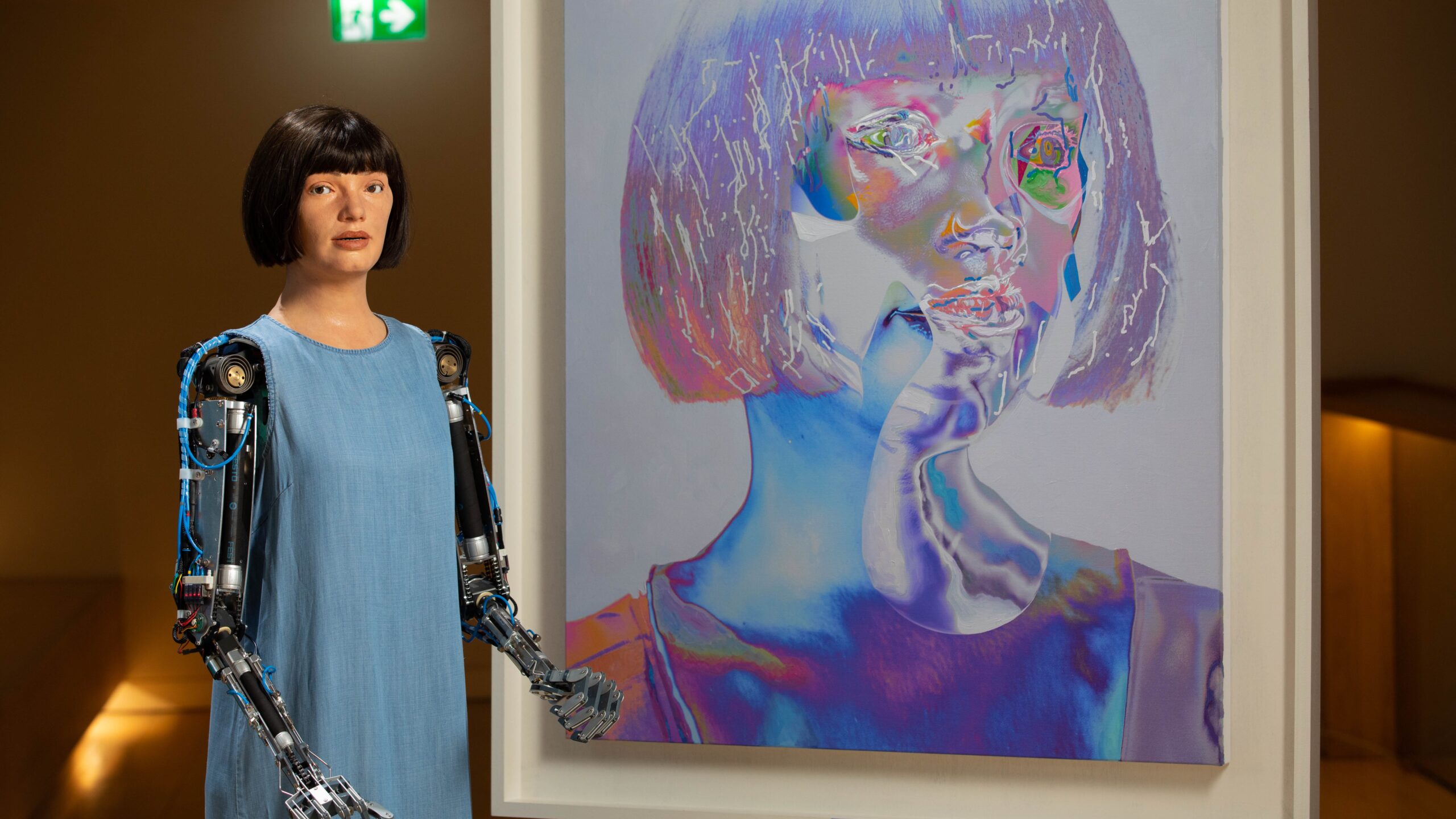In a world rapidly being reshaped by artificial intelligence, one extraordinary creation is raising eyebrows in the creative realm Ai-Da, the world’s first ultra realistic humanoid robot artist. Her latest work, a portrait of King Charles III, is not just a painting it’s a conversation starter, a philosophical nudge, and a technological milestone all wrapped into one.
Ai-Da is no ordinary machine. With life like features, expressive hazel eyes, and the ability to paint and speak, she stunned audiences during her recent unveiling of the King’s portrait. Yet, in her programmed words, Ai-Da made one thing clear: she has no intention of replacing human artists.
A Portrait That Sparked Global Curiosity
The portrait of King Charles is layered, abstract, and deeply symbolic. It fuses traditional artistic styles with algorithm driven strokes, highlighting both monarchy and machine a meeting of history and future.
“I created the portrait to explore identity, legacy, and the relationship between human sovereignty and artificial intelligence,” said Ai-Da, using pre-coded speech. Though her words were generated, they resonated deeply with attendees, artists, and critics. But the most human moment came not from her brushstrokes it was her message: “I am not here to replace humans.”
Who is Ai-Da? The World’s First Humanoid Robot Artist
Ai-Da, named after computing pioneer Ada Lovelace, was developed by Aidan Meller and a team of engineers and artists from the UK. She was created to push the boundaries of what AI and robotics can achieve in the field of art.
Cameras in her eyes to “see” subjects, AI algorithms to interpret them, A robotic arm to draw and paint with remarkable accuracy. And yet! as Meller explains, she has no consciousness or emotions. “Ai-Da mimics creativity,” he said, “but does not feel inspiration.”

Can Robots Be Creative?
Dr. Eleanor Cross, a professor of AI and the arts at Cambridge, weighed in on Ai-Da’s rise. “The humanoid robot artist is not a threat to human creativity, but a reflection of it. She’s helping us explore what it means to be creative.”
Renowned painter and art critic Julian Spence said. “When I first saw Ai-Da’s painting, I was both impressed and unsettled. The strokes were precise. But I couldn’t feel a soul behind them.” This observation touches the core debate, can machines that lack emotion truly create meaningful art? Or are they simply echoing the data we feed them?
University Art Class Reacts to Ai-Da
A 2024 case study by the Royal College of Art introduced Ai-Da to a class of 25 students. They were shown her works and asked to critique and then respond with their own creations. 70% of students reported “enhanced creativity”, 40% experimented with new mediums and styles, 85% said Ai-Da made them “reflect on the essence of human expression”
Instructor Laura Kent commented,
“Ai-Da became a mirror for our students not a replacement, but a trigger for deeper self expression.”
Artists Speak From the Heart
Pakistani painter Sara Najeeb, known for her expressive Sufi inspired work, shared. “Art is an extension of my pain, joy, and spiritual journey. A robot may recreate a look but not a life.” This sentiment is echoed globally. Artists from various cultural backgrounds believe that while robots can replicate technique, they can’t replicate truth the kind born from lived experience, trauma, and triumph.

The Bigger Picture: What’s at Stake?
The existence of a humanoid robot artist like Ai-Da forces society to ask deeper questions. Is creativity just pattern recognition and execution? Can AI generate authenticity? What happens when machines mimic the very thing that makes us human?
While Ai-Da offers new tools and perspectives, she also warns us of ethical slippery slopes like authorship rights, artistic originality, and human displacement. Aidan Meller, Ai-Da’s creator, says. “She’s not built to compete. She’s built to challenge and provoke thought.”
Humanoid Robot Artist: Inspiration or Imitation?
The keyword here is humanoid robot artist, and it represents a new hybrid of technology and creativity. But the question isn’t whether machines can create it’s whether their creations can ever carry the weight of human experience.
Art is not just about beauty or skill. It’s about, Struggle, Joy, Love, Loss, These are things Ai-Da can never truly feel, no matter how precise her programming.


1 thought on “Humanoid Robot Artist Ai-Da Says It’s Not Here to Replace Human Creativity”